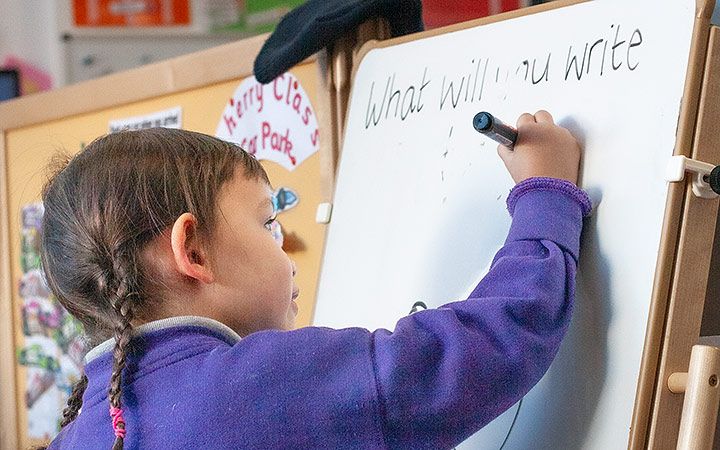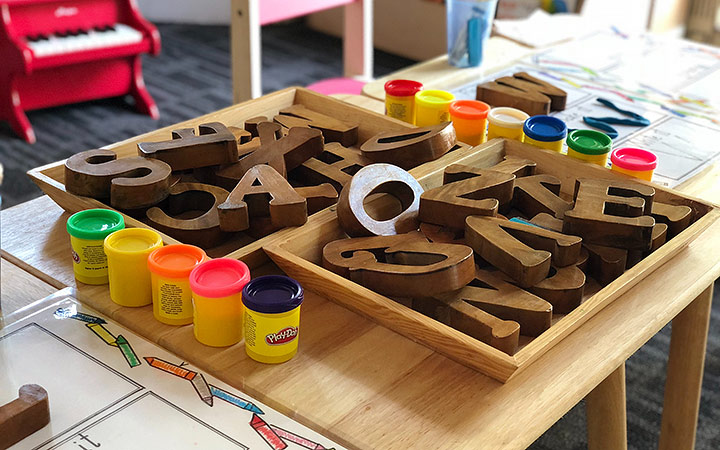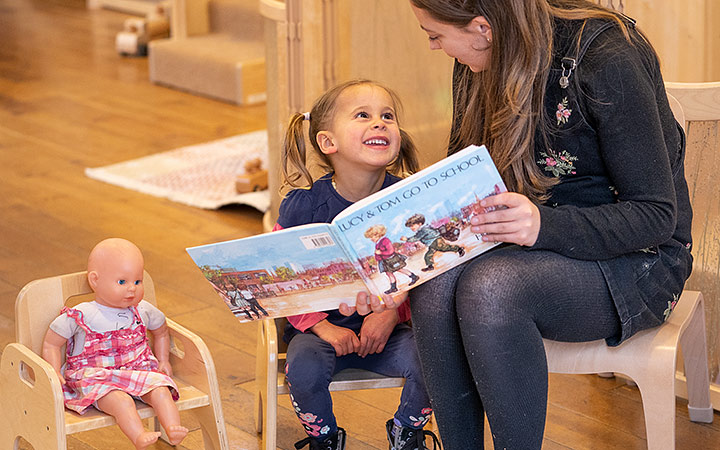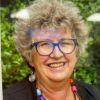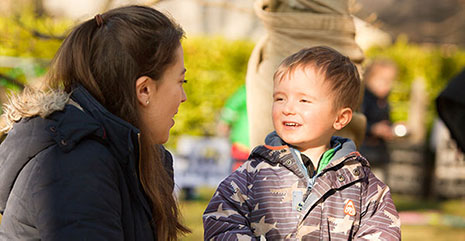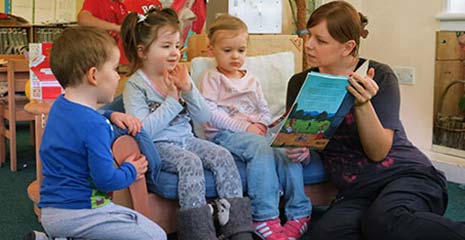Fabulous phonics?
Teaching phonics in the early years
| November 2023From early childhood, I have loved stories, rhymes and songs. I was encouraged to draw, sing, read and write, so these ideas were forever linked in my mind and my classroom. In my thirties, I found ‘my fit’ in early years teaching and championed creative teaching approaches. After ten years in a vibrant, successful school, I took on a self-imposed challenge to move to a school facing ‘special measures’ at the opposite end of my South London borough. Here I came face to face with families in poor housing, with low aspirations for their children, many of whom had very delayed speech and school staff who frequently said, ‘‘These children can’t…’’ This was in 2006.
Letters and sounds
Then, just as I was launched into improving the Early Years environment and raising morale in my school, the DfE bought in ‘Letters and Sounds’ as the new phonics-based statutory guidance for reading and writing for EYFS and KS1. The accompanying book was a densely worded tome, and the terminology used (phoneme, grapheme, digraph ..) felt new and stressful to me. Yet, I was determined to find some playful approaches, such as ‘hooks’ to enhance the enjoyment of this early reading method. Thinking of toys and food as motivational interests for young children, I began collecting small objects to fit into separate ‘sound boxes’ for s, a, t, p, i, and n’. Of course, I could have put a stone, a spoon, a sock or a stick in my ‘s’ box as legitimate choices. However, I found if I put in a spider, a snake and a Superman, I gained instant focused attention for my phonics teaching from the children, giving the clues for the objects, which they loved to guess! I have always encouraged teachers to tell stories with the contents of their sound boxes - this may be the most meaningful and memorable part of the lesson for those with a limited attention span, so it is important to select objects thoughtfully. The capacity of a child’s memory when they are interested in something always amazes me: so often, when a teacher asks a child to recall an item in the ‘s’ box before introducing a new letter, the child will remember the entire ‘s’ story from the previous learning! Recently, I have begun to add small wooden peg people –a boy and a girl, to each box, with names that begin with the phoneme and whose clothes also have a connection. For example, Sam and Sienna wear stripy and spotty clothes – which is additionally a great link to the book, ‘My Mum and Dad make me laugh.’ Any connections can and should be pointed out as these make great sense to children and help to grow their confidence and knowledge of letters and their sounds.
After lockdown, reception teachers commented on the massively increased attention of the children when the real objects and toys emerged as the teacher told the story. After a time when children have probably experienced even more screens than usual, storytelling with objects is extremely powerful. After the phonics carpet sessions, the ‘sound box’ of toys can be incorporated into a small world scenario or ‘Interplaylands’, where the children use the objects and people to tell their own stories. At tidy-up time, there is another integral learning opportunity: children love to put the objects back into the correct sound box. Another aspect of this ‘letter immersion’ approach that I recommend is the deliberate use of multi-sensory materials. There should be items within the sound boxes to hear, touch and smell in addition to the toys. This aspect is vital when teaching neuro-atypical children. Teachers can also refer to body parts that begin with the letter of the day and encourage children to find things with the same letter sound in the learning environment. Finally, children can be given a small taste of something that has this initial letter sound.
The day came when I saw a group of ‘my parents’ leaving a Local Authority session which had introduced ‘Letters and Sounds’ to them. These women were upset, discussing the session by saying things like, “It is so much harder than when I was in school…” or, “there is no way that I will be able to help my child when I do not understand it myself..” and “it’s not even ‘a, b, c anymore!” Listening to their concerns, I realised that some form of learning partnership was desperately needed between home and school. Encouraged to explore this idea, I began weekly coffee mornings with a group of reception parents in my PPA time. I intended to share my phonics planning for the week ahead to demystify the language, spark their interest and invite their involvement. To my surprise, this worked out brilliantly and – this group of parents began to find innovative ways for home and school to work together.
Family reading workshops
Early on, a ‘eureka moment’ occurred when a parent realised that an explicit link could be made between her child’s learning in school and foods eaten at home; she suddenly said, “I know, on ‘f’ day, I can give him fish fingers for tea!” Brilliant! I was then able to explain how Loris Malaguzzi spoke about the learning environment as the ‘third teacher’. Enthusiasm for the ‘food-link’ idea among the parents in our weekly sessions led to the inclusion of different foods in my phonics planning and the creation of a ‘Eating the Alphabet’ song (see Spotify). From this came an empty Alphabet sticker chart, to be taken home and gradually filled with as the children learnt new phonemes. This innovation proved popular with parents and children alike because the children love collecting stickers, and the parents gained clarity on the order in which the letters were learnt. In class, I began to plan for more hands-on activities that the children could access independently related to the phoneme or digraph of that day; these became my ‘Fabulous phonics plans’. The over-arching structure that bound the phonics teaching together was the weekly drawing and writing session based on the letters learned that week. This ‘Big Write’ was usually based on the focus book for that week, chosen because it has some link to the three weekly phonemes or digraphs. The A3 folder collections of this weekly work provided excellent evidence of each child’s progress in writing. These playful approaches can greatly enhance the understanding of young children new to English and can easily be adapted for teaching children English overseas. New and additional ideas should be written down because I believe that exciting, memorable teaching grows out of excellent planning that can always be improved upon. You do not have a pile of books to mark when you teach in the Early Years, but you sure do need to spend time gathering the real objects that you will need! Yet it is all worth it, as the children will never forget what they experienced with their senses.
Author notes
In April 2021, the DFE published the revised core criteria for effective systematic synthetic phonics teaching programmes (SSP) and launched a new process to validate those programmes. A number of publishers completed an initial self-assessment based on these criteria, which independent evaluators then reviewed. After three rounds of evaluation, 45 SSP programmes were validated. Fabulous Phonics is not one of the 45 stand-alone validated SSP programmes, but the playful and creative teaching methods described in this article may be used alongside any one of these. On Spotify you can find my two songs: Eating the Alphabet (for Phase 2) and Digraph Ditty (for Phase 3), with an amazing soundtrack by Andy Mellon, beautifully sung by Esther Shepherd and Jess Mellon.

